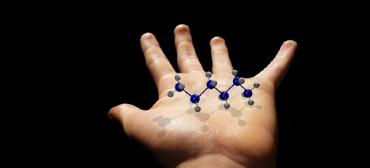Golfer's Elbow
Medial Epicondylitis (Golfer's and Baseball Elbow)
What is medial epicondylitis?
| |
| Click Image to Enlarge |
Medial epicondylitis, also known as golfer's elbow, baseball elbow, suitcase elbow, or forehand tennis elbow, is characterized by pain from the elbow to the wrist on the inside (medial side) of the elbow. The pain is caused by damage to the tendons that bend the wrist toward the palm. A tendon is a tough cord of tissue that connects muscles to bones.
What causes medial epicondylitis?
Medial epicondylitis is caused by the excessive force used to bend the wrist toward the palm, such as swinging a golf club or pitching a baseball. Other possible causes of medial epicondylitis include the following:
-
Serving with great force in tennis or using a spin serve
-
Weak shoulder and wrist muscles
-
Using a too tightly strung, too short, and/or too heavy tennis racket
-
Throwing a javelin
-
Carrying a heavy suitcase
-
Chopping wood with an ax
-
Operating a chain saw
-
Frequent use of other hand tools on a continuous basis
What are the symptoms of medial epicondylitis?
The following are the most common symptoms of medial epicondylitis. However, each individual may experience symptoms differently.
The most common symptom of medial epicondylitis is pain along the palm side of the forearm, from the elbow to the wrist, on the same side as the little finger. The pain can be felt when bending the wrist toward the palm against resistance, or when squeezing a rubber ball.
The symptoms of medial epicondylitis may resemble other medical problems or conditions. Always consult your doctor for a diagnosis.
How is medial epicondylitis diagnosed?
The diagnosis of medial epicondylitis usually can be made based on a physical examination. The doctor may rest the arm on a table, palm side up, and ask the patient to raise the hand by bending the wrist against resistance. If a person has medial epicondylitis, pain usually is felt in the inner aspect of the elbow.
Treatment for medial epicondylitis
Specific treatment for medial epicondylitis will be determined by your doctor based on:
-
Your age, overall health, and medical history
-
Extent of the condition
-
Your tolerance for specific medications, procedures, and therapies
-
Expectation for the course of the condition
-
Your opinion or preference
Treatment for medial epicondylitis includes stopping the activity that produces the symptoms. It is important to avoid the movement that caused the condition in the first place. Treatment may include:
-
Ice pack application (to reduce inflammation)
-
Strengthening exercises
-
Anti-inflammatory medications
-
Bracing
-
Corticosteroid injections
-
Surgery (rarely necessary)





















